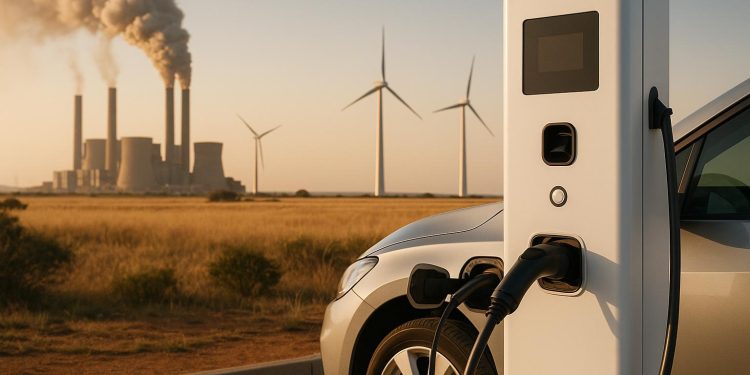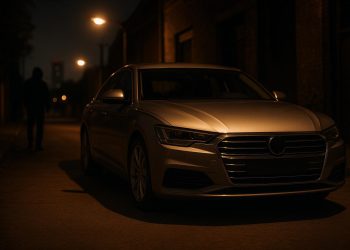Charging an EV in South Africa is closely tied to the country’s electricity grid, which is heavily reliant on coal. While EVs eliminate tailpipe emissions, their true environmental impact depends on the energy sources powering the grid. Here’s what you need to know:
- Coal Dominance: South Africa’s grid is largely powered by coal, making it one of the most carbon-intensive globally. This offsets some benefits of EVs by shifting emissions from vehicles to power plants.
- Renewable Growth: Solar and wind energy are gradually being added, offering cleaner charging options. However, progress is slow, requiring more investment and policy support.
- Load Shedding Issues: Frequent power outages disrupt EV charging, highlighting the challenges of relying on an unstable grid.
- Future Improvements: Plans like the Integrated Resource Plan (IRP) aim to reduce coal reliance and expand renewable energy, which could lower EV charging emissions over time.
To reduce your EV’s carbon footprint, consider charging during peak renewable energy production or using home solar panels. Transitioning to cleaner energy sources is key to maximizing the benefits of EVs in South Africa.
South Africa’s Current Electricity Grid Composition
Energy Sources in the Grid Mix
South Africa’s electricity grid relies heavily on coal-fired power plants, which form the backbone of its energy production. Alongside coal, the grid includes nuclear energy generated at the Koeberg Nuclear Power Station near Cape Town and natural gas, primarily used in peaking power plants for meeting high demand. Renewable energy sources, such as solar and wind, are gradually making their mark, while hydroelectric power plays a smaller role in the overall mix. Each energy source contributes differently to the emissions tied to electric vehicle (EV) charging. Coal, for instance, has the highest carbon emissions, whereas renewables provide the cleanest option for charging EVs.
Problems with Coal Dependency
Despite the variety in the energy mix, South Africa’s dependence on coal brings significant challenges. Coal-fired power plants are a key factor in grid instability, often leading to load shedding – planned power outages that disrupt daily life, including EV charging. This instability not only impacts the reliability of EV use but also undermines the environmental benefits of transitioning to electric transportation. These issues underscore the pressing need to upgrade and diversify the country’s energy infrastructure.
Renewable Energy Growth
In response to these challenges, renewable energy is steadily gaining traction. South Africa is actively moving toward cleaner energy solutions, with solar photovoltaic and wind power projects leading the charge. This shift is supported by a growing interest in sustainable transportation options, which has fueled investments in renewable energy initiatives. These efforts are gradually reshaping the country’s energy landscape, offering hope for a more reliable and eco-friendly grid in the future.
Nick Singh on EV Charging, Smart Microgrids & Energy Innovation | Eskom South Africa
How Grid Mix Affects EV Charging Emissions
To understand the environmental impact of electric vehicles (EVs) in South Africa, it’s crucial to consider the makeup of the country’s electricity grid. While EVs don’t emit pollutants from their tailpipes, the emissions linked to charging them depend entirely on the grid’s energy sources.
In South Africa, where coal is a major player in electricity generation, the carbon footprint of charging an EV reflects this reliance. A grid dominated by coal significantly increases the emissions associated with EV charging.
EV Emissions on a Coal-Heavy Grid
When the grid is heavily reliant on coal, charging an EV can result in considerable indirect emissions. While EVs eliminate harmful tailpipe pollutants, coal-generated electricity offsets some of these environmental gains by adding substantial carbon emissions during charging. On top of this, challenges like load shedding can disrupt charging schedules, making it harder to optimize the environmental advantages of EVs. However, incorporating renewable energy into the grid could drastically reduce these emissions, offering a cleaner alternative.
How Renewables Can Lower EV Charging Emissions
Shifting to renewable energy sources such as solar and wind is a promising way to cut the carbon intensity of electricity used for charging EVs. These energy sources produce significantly less CO2 compared to coal. EV owners can further reduce their environmental impact by charging during times when renewable energy generation is at its peak or by using private renewable setups like home solar panels.
Ultimately, moving toward a cleaner and more balanced energy grid is key to unlocking the full environmental benefits of electric vehicles in South Africa.
sbb-itb-09752ea
EVs vs. Internal Combustion Engine (ICE) Vehicles: Emissions Comparison
When comparing electric vehicles (EVs) to internal combustion engine (ICE) vehicles, it’s essential to go beyond just tailpipe emissions. A full lifecycle approach – factoring in production, operation, and energy sources – offers a clearer picture of their environmental impact.
Lifecycle Emissions of EVs and ICE Vehicles
ICE vehicles generate emissions not only during operation but also throughout the processes of fuel extraction, refining, and transportation. On the other hand, EVs have a higher carbon footprint during production, especially due to battery manufacturing. However, their operational emissions are significantly lower over time. This gap narrows further as the energy grid incorporates more renewable energy sources. For instance, in South Africa, as the electricity grid shifts toward cleaner energy, the long-term emissions advantage of EVs over ICE vehicles becomes increasingly evident.
The Broader Picture on Emissions
Another key factor is where emissions occur. EVs shift emissions from crowded urban areas to power plants, where pollution can be more effectively managed. This relocation improves local air quality in cities. Additionally, using renewable charging solutions like home solar panels can further reduce the environmental footprint of EVs, making them an even cleaner alternative to ICE vehicles.
Future Outlook: Decarbonizing the Grid and EV Adoption
South Africa’s journey toward a cleaner energy future is set to amplify the benefits of electric vehicles (EVs). As the country works to transition away from a coal-heavy grid, decarbonization efforts aim to make EV charging more environmentally friendly.
IRP 2025 and the Push for a Greener Grid
The Integrated Resource Plan (IRP) 2025 lays out a roadmap to reduce reliance on coal and increase the use of renewable energy sources. This shift is expected to significantly cut emissions tied to EV charging, making them an even cleaner alternative to traditional vehicles.
Smarter, Cleaner EV Charging
As renewables take up a larger share of the energy mix, EV owners will benefit from lower-emission charging options. Timing EV charging to align with peak renewable energy production can further minimize emissions. However, achieving these goals will require strong policies to ensure the grid can handle these changes effectively.
Overcoming Challenges with Policy and Industry Action
Despite the growing interest in EVs, challenges like load shedding remain a hurdle. To ensure grid stability and accelerate EV adoption, policymakers and industry leaders must work together to implement robust solutions. The time for action is now to support a sustainable energy future.
Conclusion: Key Takeaways for EV Owners
As South Africa transitions to a cleaner energy grid, EV owners need to rethink their charging habits. The country’s power supply issues emphasize the need for smart and flexible charging strategies. Understanding the differences between fast and slow charging can help you make better decisions, especially during times of grid instability, ensuring both efficiency and reduced emissions. To further minimize your environmental impact, try to charge your vehicle during periods when renewable energy generation is at its peak.
FAQs
How does South Africa’s coal-based electricity affect the environmental impact of electric vehicles?
South Africa’s dependence on coal for electricity generation poses a challenge to the environmental promise of electric vehicles (EVs). The emissions linked to EVs are largely tied to the energy source used to charge them. When that energy comes from coal, the indirect emissions can outweigh the benefits typically associated with EVs.
Although EVs do eliminate tailpipe emissions, their overall environmental impact is diminished when the electricity grid is powered by fossil fuels like coal. Shifting toward renewable energy sources is essential to fully realize the environmental potential of EVs in South Africa.
How can I reduce my EV’s carbon footprint while charging in South Africa?
To shrink the carbon footprint of your EV in South Africa, try charging it during periods when renewable energy sources are supplying more power to the grid. Another great option is investing in a home solar system or participating in community renewable energy initiatives to help meet your charging needs. On top of that, practicing efficient driving habits and keeping up with regular maintenance can go a long way in reducing your environmental impact.
How will South Africa’s Integrated Resource Plan (IRP) 2025 impact EV charging emissions?
The Integrated Resource Plan (IRP) 2025 is set to play a key role in shaping South Africa’s energy future, especially when it comes to the emissions linked to charging electric vehicles (EVs). Right now, since most of South Africa’s electricity is generated from coal, the environmental impact of charging EVs is closely tied to the grid’s energy composition.
However, if the IRP 2025 successfully integrates more renewable energy sources – like wind and solar – into the mix, it could dramatically cut down the carbon emissions associated with EV charging. This shift would make EVs an even greener and more sustainable option for South African drivers.
Related Blog Posts
- EV Buyers in South Africa: Emissions and Behavior
- SA’s First Solar EV Charging Stations: What to Know
- Kenya’s EV charging rollout inspires South African planners
- South Africa’s EV Policies: Renewable Charging Impact





